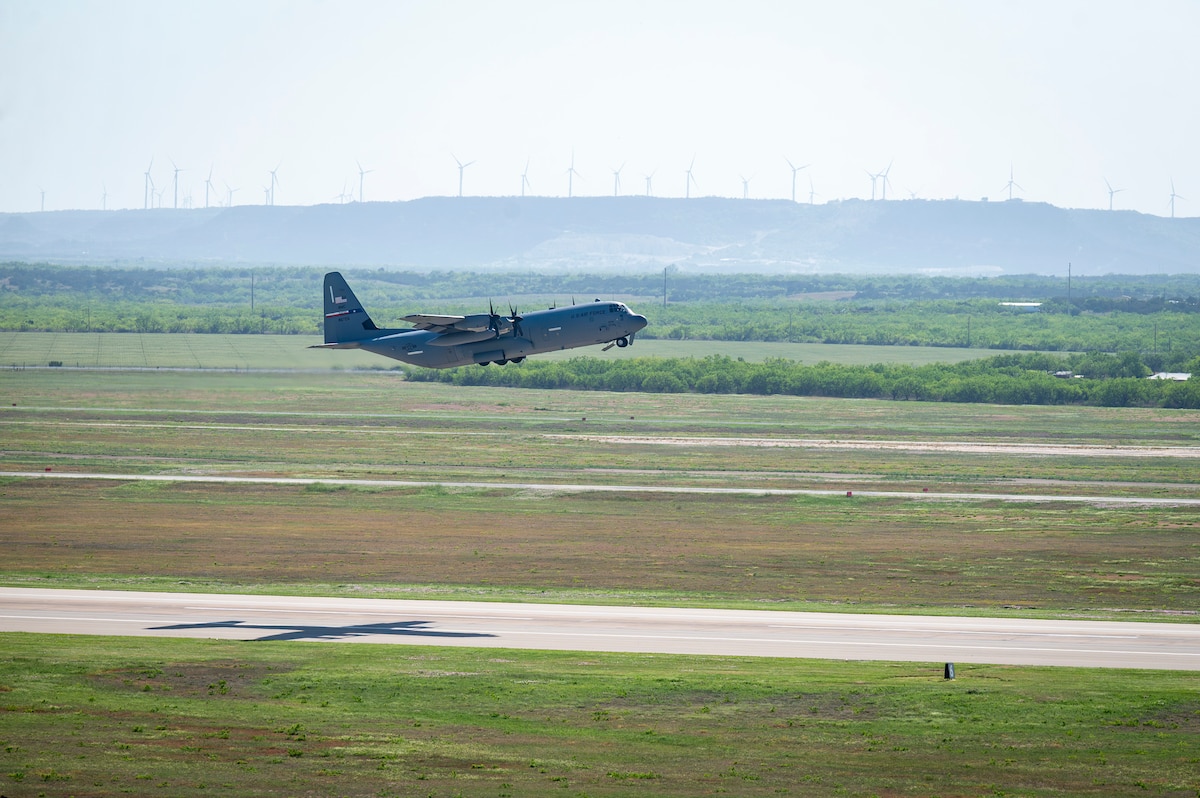A US Air Force C-130J Super Hercules aircraft recently carried out a marathon flight from Texas to Guam, covering halfway around the globe with just one stop for refueling in Hawaii.
The mission, Hazard Leap, was announced by the US Air Force on April 23. It saw a single C-130J Super Hercules depart Dyess Air Force Base in Texas for a 26-hour and 33-minute journey to Andersen Air Force Base in Guam.
This event marks a key milestone for the US Air Force, showcasing the aircraft’s ability to operate continuously for extended durations without the need for multiple stops.
The flight, undertaken by a crew from the 40th Airlift Squadron, commenced on April 18 with two complete crews comprising three pilots and two loadmasters each.
Departing from Dyess Air Force Base, the aircraft charted its course across the Pacific Ocean to reach Guam, a crucial strategic outpost for the US military in the western Pacific region.

The C-130J was equipped to handle the demands of the journey. External fuel tanks, affixed beneath its wings, provided an additional 17,000 pounds of fuel, effectively extending its flight time by approximately four hours.
Captain Anna Santori, one of the pilots involved in the Hazard Leap mission, stated, “The external tanks have new capabilities for us, allowing us to fly farther without refueling. It gives us about 17,000 pounds of fuel, which translates to roughly four extra hours of flying.”
The USAF said that the planning and preparation preceding the flight were crucial in ensuring its success. Crews meticulously analyzed flight routes and wind patterns and devised contingency plans to mitigate potential challenges such as adverse weather conditions or deviations in flight paths.
Moreover, to adapt to the demanding schedule, crew members adjusted their sleep patterns in advance, shifting their circadian rhythm 48 hours before departure. This proactive measure aimed to optimize alertness and performance during the lengthy mission.
Lieutenant Cyan Brown, from the 7th Bomb Wing, highlighted the strategic implications of the C-130J’s endurance capabilities. Brown noted that the aircraft’s ability to traverse between the second and first island chains with minimal logistical support underscored its versatility and operational efficiency in the Pacific theater.
How Do Such Operations Aid In US Preparedness Against China?
While the 40th Airlift Squadron isn’t the first to employ C-130Js with tanks, it stands as the first unit within the Air Mobility Command (AMC) to external fuel tanks in a Maximum Endurance Operation (MEO).
According to the USAF, the objective of the latest MEO wasn’t merely a test of endurance for both crew and aircraft but a demonstration of the AMC’s preparedness to execute follow-on missions at a moment’s notice.
Maj. Alex Leach, the mission commander and 40th Airlift Squadron assistant director of operations, hailed the successful completion of “Hazard Leap” as a testament to the team’s dedication and the extraordinary capabilities of the C-130J Super Hercules.
“This operation set a new standard for our squadron and this airframe; it serves as a stepping-stone for future missions,” Maj. Leach remarked, emphasizing its pivotal role as a precursor to future missions.
The importance of these operations holds considerable weight against the backdrop of the shifting geopolitical landscapes, especially in the Indo-Pacific region, where the potential for conflict with China is on the rise.
Given the potential conflict scenarios, various Air Force units have conducted MEOs to bolster preparedness, recognizing the pivotal role of the Air Mobility Command in providing essential airlift, aerial refueling, and aeromedical evacuation support across the region.
Previous maximum endurance operations, like a 36-hour KC-46 flight and a 72-hour KC-135 mission, have brought attention to the physical and mental hurdles associated with extended periods of flight.
Recognizing this, the AMC is actively exploring innovative solutions to monitor and mitigate crew fatigue, akin to the meticulous attention given to the aircraft’s performance through advanced diagnostics.
Additionally, during their presence in the region, the aircraft and crews of the 40th Airlift Squadron will participate in the Balikatan exercise in the Philippines. The exercise will focus on deploying equipment to forward areas, refueling points, and transporting Marines from Lal-Lo to Batan Island in the Luzon Strait near Taiwan.
Batan Island holds strategic significance in the northern island chain, untouched by the USAF mobility aircraft for over a decade. The US Air Force aims to facilitate follow-on missions by providing fuel support for USMC aircraft operations by leveraging external tanks and the capability to land in austere locations.
- Contact the author at ashishmichel(at)gmail.com
- Follow EurAsian Times on Google News